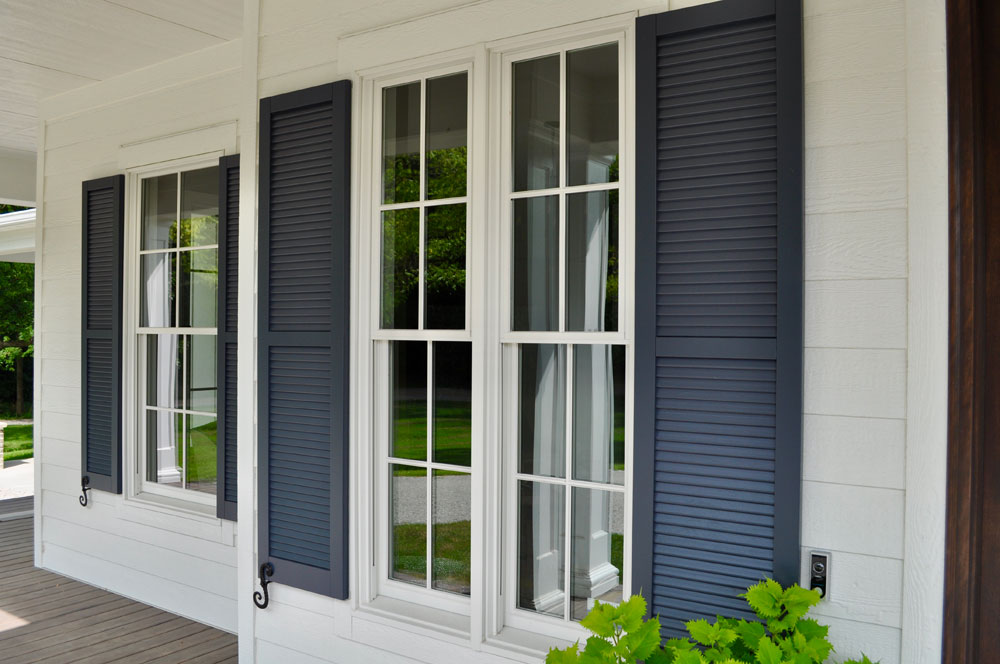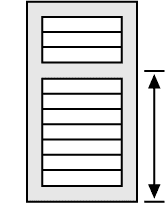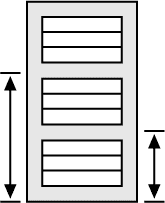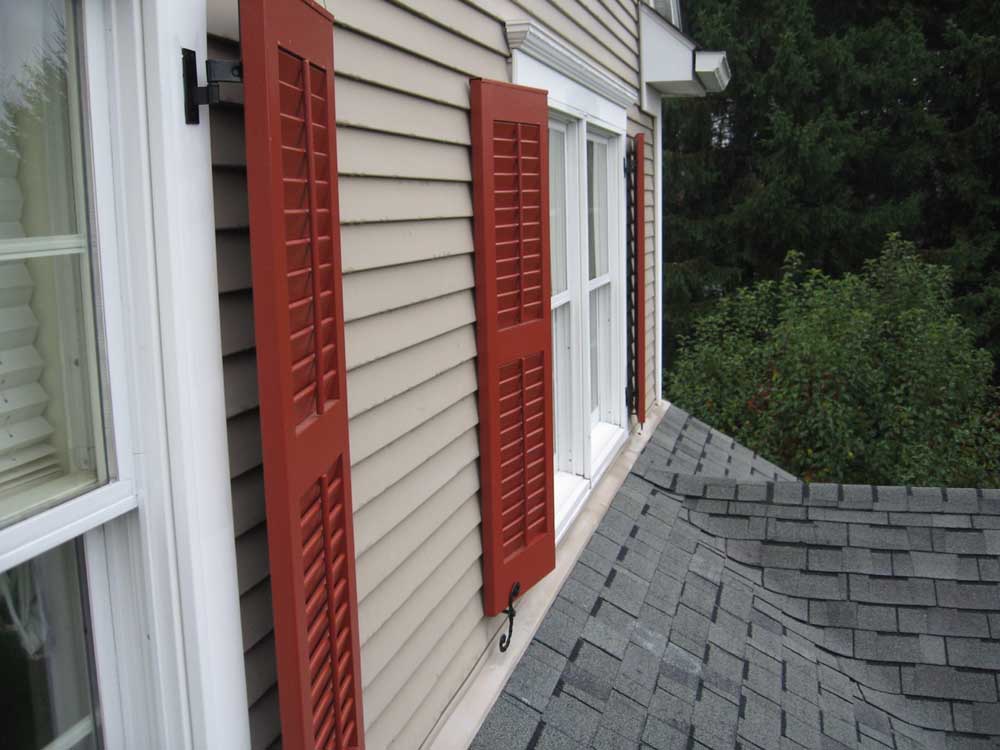What is a Divider Rail for Shutters
Exterior shutters frequently use what is called a “divider rail.” Rails are the horizontal static structural members of a shutter. Louvered and solid panel shutters naturally incorporate a top rail and a bottom rail. A divider rail is located within the shutter to create multiple vertical sections.

Do You Need a Divider Rail?
A divider rail is optional for wood shutters and PVC shutters under 90 inches in height. In shutters in excess of 90 inches, the divider rail is necessary to maintain structural stability. The same limitations are applied to composite shutters. The threshold for vinyl shutters is 55 inches. Combination shutters that incorporate multiple features, such as louvers and raised panels, need a divider rail to separate the different styles. The divider rail size depends on the window shutter material and is displayed on the page for the desired style.
Why use a Divider Rail
Divider rails are particularly useful when incorporated within movable louver interior shutters. Creating a top louver area separate from the bottom allows the user to open one set for light or visibility while simultaneously leaving the other closed for privacy. Exterior shutters in the modern world are typically manufactured with fixed louvers, so divider rails are incorporated for visual interest and to interrupt a repetitious field. In addition, divider rails add strength to tall shutters.
Where to Locate a Shutter Divider Rail
The most common placement of a divider rail is in the center of an outdoor shutter. This arrangement results in two equal size sections top and bottom, causing some to dub the crosspiece a “center rail”, “center bar” or “mid-rail.” However, ShutterLand permits a divider rail location at any height. A custom divider rail measurement allows the homeowner to determine the best placement.
A divider rail is the most logical area to attach a functioning slide bolt for securing hinged shutters in a closed position. If this is a feature that may be incorporated, the divider rail will need to be accessible from inside of the house.
We find that aligning the divider rail in line with the most prominent horizontal window division results in the best appearance. If the window is not divided, many homeowners specify a division point slightly over half.
Measure for a Divider Rail

Measure the “division point” from the bottom of the shutter to the desired center of the divider rail. Shutters with solid panels will have the divider rail placed at that exact location. The actual position for louvered or combination shutters may be slightly higher or lower to accommodate for spacing of the slats.
Shutters with Two Divider Rails

A second divider rail may be desired for some applications and taller shutters, creating three vertical areas of interest. The second divider rail is measured the same way as the first, from the bottom of the shutter to the division point.
Divider Rail vs. Double Tier
A divider rail splits a single shutter into two or more sections of emphasis. A double tier incorporates two shutters stacked in vertical alignment. This tier-on-tier configuration is rarely used for exterior shutters, but is a potential a solution for extremely tall windows. A two tier shutter unit covers the full height of the window with multiple panels. The top shutter hinges and swings independent of the lower shutter. There is only a fraction of space between the bottom rail of the upper shutter and top rail of the lower shutter. Functional hinges will allow the top tier to swing open for light and visibility while leaving the bottom closed for privacy.
Exterior Shutters with a Divider Rail and a Tilt Bar
A tilt bar is a vertical rod that connects a a group of louvers. A tilt bar attached to a shutter without a divider rail will run the full length of the section, slightly overlapping the top and bottom rails. The addition of a divider rail will result in separate tilt bars for the top and bottom sections. ShutterLand customers have the option to us a faux tilt bar on both areas, only the top louvers or only on the bottom louvers. Choose also if the louvers will point up or down.

In summary, a divider rail is an important component used on over 70% of both stationary and functional exterior shutters. A custom position and placement of the divider rail is paramount to it’s operation and appearance.

